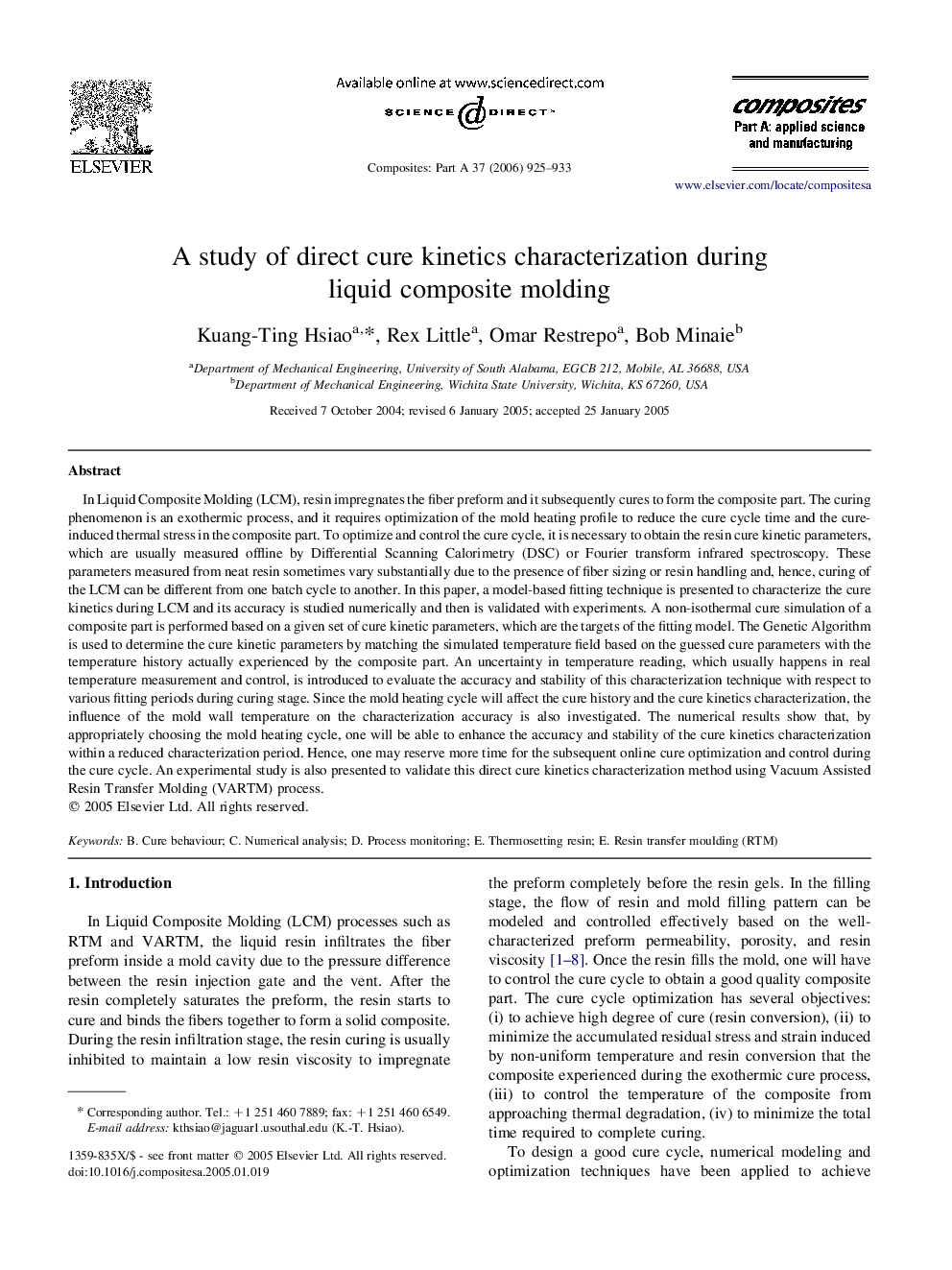| Article ID | Journal | Published Year | Pages | File Type |
|---|---|---|---|---|
| 1467928 | Composites Part A: Applied Science and Manufacturing | 2006 | 9 Pages |
In Liquid Composite Molding (LCM), resin impregnates the fiber preform and it subsequently cures to form the composite part. The curing phenomenon is an exothermic process, and it requires optimization of the mold heating profile to reduce the cure cycle time and the cure-induced thermal stress in the composite part. To optimize and control the cure cycle, it is necessary to obtain the resin cure kinetic parameters, which are usually measured offline by Differential Scanning Calorimetry (DSC) or Fourier transform infrared spectroscopy. These parameters measured from neat resin sometimes vary substantially due to the presence of fiber sizing or resin handling and, hence, curing of the LCM can be different from one batch cycle to another. In this paper, a model-based fitting technique is presented to characterize the cure kinetics during LCM and its accuracy is studied numerically and then is validated with experiments. A non-isothermal cure simulation of a composite part is performed based on a given set of cure kinetic parameters, which are the targets of the fitting model. The Genetic Algorithm is used to determine the cure kinetic parameters by matching the simulated temperature field based on the guessed cure parameters with the temperature history actually experienced by the composite part. An uncertainty in temperature reading, which usually happens in real temperature measurement and control, is introduced to evaluate the accuracy and stability of this characterization technique with respect to various fitting periods during curing stage. Since the mold heating cycle will affect the cure history and the cure kinetics characterization, the influence of the mold wall temperature on the characterization accuracy is also investigated. The numerical results show that, by appropriately choosing the mold heating cycle, one will be able to enhance the accuracy and stability of the cure kinetics characterization within a reduced characterization period. Hence, one may reserve more time for the subsequent online cure optimization and control during the cure cycle. An experimental study is also presented to validate this direct cure kinetics characterization method using Vacuum Assisted Resin Transfer Molding (VARTM) process.
